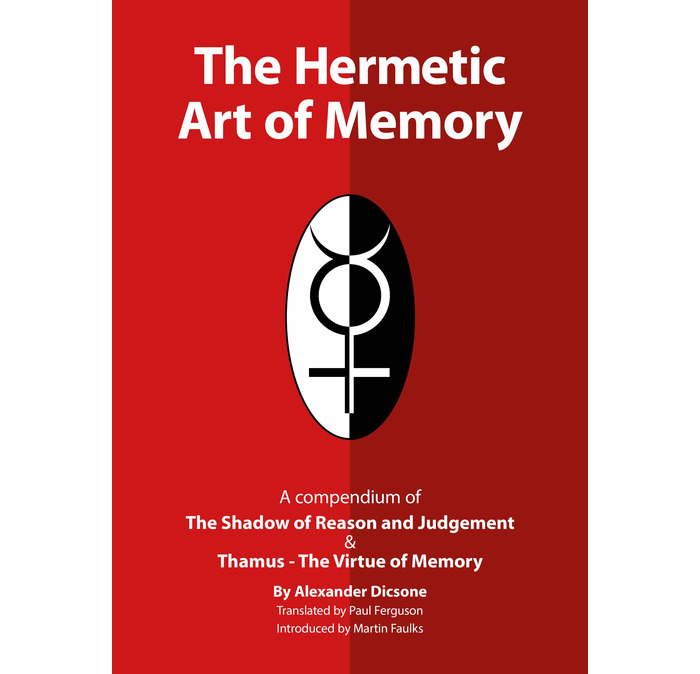The Hermetic Art of Memory
By Martin Faulks
SKU: 9780853185734-
DESCRIPTION
Two manuals of Hermetic attainment written by the Scottish apprentice of Giordano Bruno
A compendium of
The Shadow of Reason and Judgement (1583)
&
Thamus - The Virtue of Memory (1597)
By Alexander Dickson
Translated by Paul Ferguson
Introduced by Martin Faulks
Including both the original Latin and translations of the works with extensive explanatory footnotes
During the intellectual swirl of the mystic Renaissance the phrase Art of Memory referred to a specific set of memory disciplines and techniques that had evolved from classical Greek mnemonics. This was a method whereby one would create a memory palace in the mind. This could be based on a real or imagined place which, using intensive imagination, one would build up in the memory to the degree that it could be visited with ease. This memory palace could then be used as a kind of memory storehouse. By placing items in different locations in the palace one could recall them with ease when the palace was next visited. In order to make the images memorable the characters, figures or items used were often dramatic and could sometimes be quite striking to contemporary sensibilities.
This meditative art was commonly accepted to be a very good method for memorising speeches, but also a great form of moral training. However, some practitioners took it further, believing that this art had far more potential. They believed that if practised in the correct way this art could lead to an expansion of awareness and mental ability. This inner transformation would not only lead to perfect memory, but would gift the practitioner with higher awareness and total mastery of self.
Masters of this more mystical art of memory were believed to be the holders of a secret tradition from Ancient Egypt that would gift them with clairvoyant perception of and control over higher forces. The most famous of these figures was that of Giordano Bruno who taught his mystic art of memory throughout Europe. His works taught a magical memory system veiled in encoded language and parable and were greatly sort after in his day. They remain a mystery to many to this very day.
But few are aware of another mystical memory master and member of the court of then James VI of Scotland - Alexander Dicsone. His mastery led to great fame in the British Isles with many authors referring to the more magical side of memory as "Dicsones Art".
Renowned historians such as David Stevenson, Robert Cooper, and Fabio Venzi have speculated as to the possible influences these hidden practices could have had on the development of Freemasonry due to Discone's close proximity to William Schaw. Schaw first drew up constitutions for Scottish stonemasons in which the Masonic ritual seems to be referred to as the art of memory.
Now for the first time ever two of Dicsone's own works on the art of memory have been translated into English by an expert in Renaissance Latin. Accompanied by extensive footnotes and an explanatory introductory chapter by Hermeticist Martin Faulks, Dicsones beautifully inspiring works are less guarded than his teachers and offer a unique opportunity to grasp the art and discover its full potential.
Format : A5
Paperback
Retail Price. £15
-
THE AUTHOR
-
CUSTOMER REVIEWS


